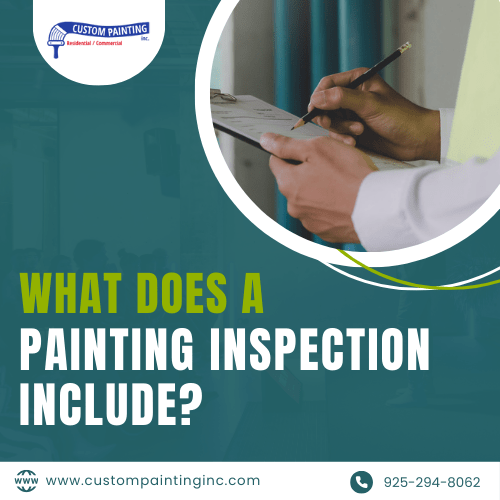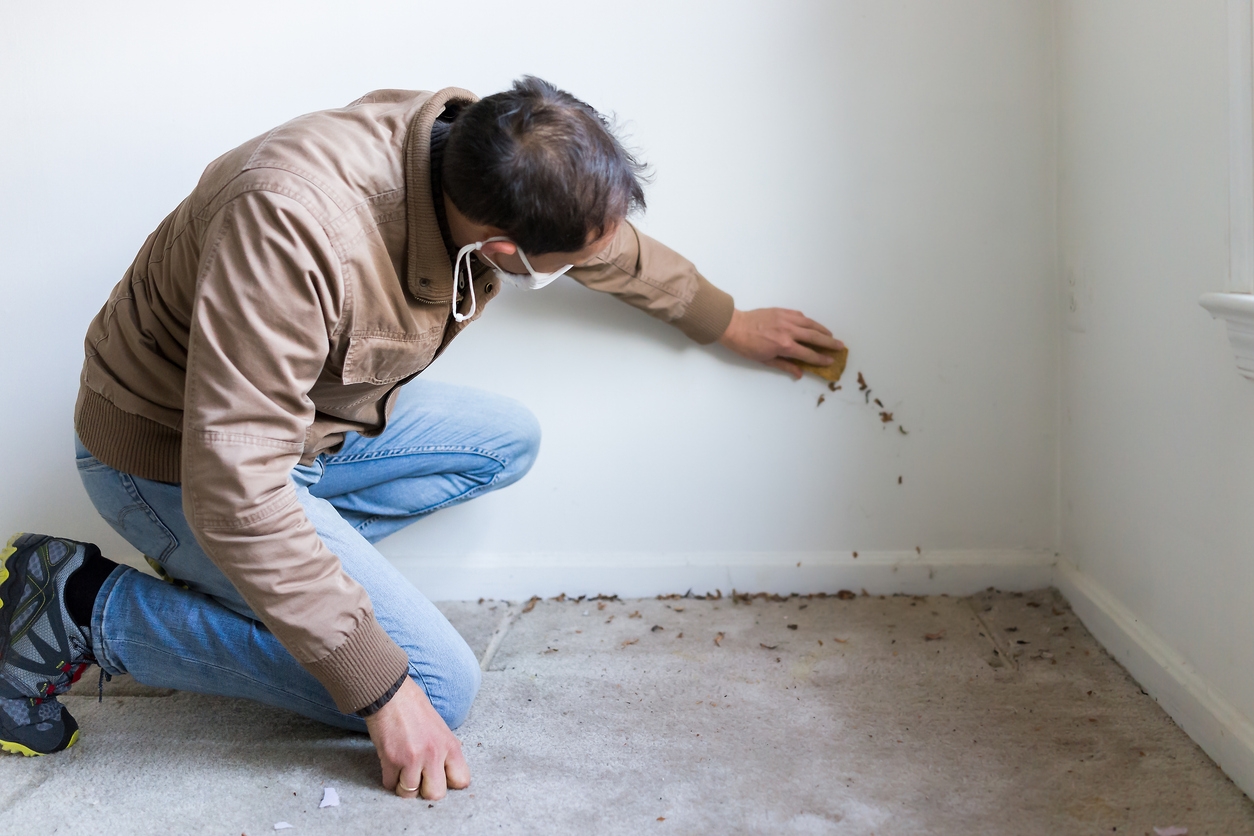When painting your home, whether you’re tackling the interior or exterior, it’s easy to get caught up in choosing colors and finishes. However, a thorough painting inspection is one of the most critical steps that often gets overlooked. This crucial phase is like the foundation of a house—if it’s not done right, everything that comes after could be at risk. Enjoy clean, professional results from prep to final trim—schedule our interior painting service.
Proper surface inspection sets the stage for a smooth and durable finish that looks great and stands the test of time. So, whether you’re doing it yourself or hiring professionals, make sure a comprehensive painting inspection is at the top of your to-do list.
Importance of Professional Inspection
When painting your home, having a professional inspection can make a world of difference. It’s not just about making sure the paint job looks good—it’s about ensuring that it lasts and stands up to the wear and tear of everyday life. Here’s why inspection is important:
1. It helps you identify potential issues early
One key benefit of a professional inspection is catching potential problems early on. Professionals have the trained eye and experience to spot issues that might not be obvious to an untrained person. They can identify problems like moisture damage, structural issues, or poor surface preparation that could compromise the quality of the paint job. If you catch these issues early, they can be addressed before they become bigger problems, saving you time, money, and hassle.
2. It ensures a high-quality finish
A professional inspection helps ensure that the final paint job is of the highest quality. Professionals know the best practices for surface preparation, paint application, and finishing techniques. They can assess whether the paint has been applied evenly, whether the colors are consistent, and whether the texture is smooth. This attention to detail is crucial for achieving a flawless finish that looks great and enhances your home’s overall aesthetic.
3. It ensures durability and longevity
A well-done paint job should be durable and long-lasting, protecting your surfaces and keeping your home looking fresh for years. Professional inspectors ensure that all aspects of the painting process, from choosing the right type of paint to ensuring proper application and drying times, are done correctly. This comprehensive approach helps prevent issues like peeling, cracking, or fading, ensuring that your investment in a new paint job provides lasting value.
4. It can give you peace of mind
Perhaps most importantly, a professional inspection gives you peace of mind. Knowing that experts have thoroughly checked every aspect of the paint job means you can trust that the work has been done to a high standard. This assurance allows you to enjoy your beautifully painted home without worrying about hidden flaws or future problems.
Key Areas of Inspection
Professional painters conduct the following inspections for potential problems:
1. Wood deterioration
Wood surfaces require special attention because they can deteriorate over time due to moisture, pests, or just regular wear and tear. An essential part of the painting inspection is to look for any signs of rot or damage in wooden elements, such as trim, doors, or siding. If there’s any rot or decay, it needs to be addressed before painting can begin. Painting over damaged wood is a temporary fix that won’t last, as the underlying issues will eventually resurface, causing the paint to crack and peel.
2. Moisture damage
Moisture is one of the sneakiest culprits when it comes to damaging paint jobs. During a painting inspection, looking for signs of water intrusion or mold is crucial, as these can cause serious problems before and after painting. Moisture problems are common in areas of the building with high humidity or areas that are not typically exposed to sunlight. If moisture gets trapped under the paint, it can lead to bubbling, peeling, or even mold growth, which looks unsightly and poses health risks.
Inspectors will check for telltale signs of moisture damage, like discoloration, soft spots, or a musty smell. They might also use moisture meters to detect hidden dampness in walls or ceilings. If any issues are found, they need to be addressed before painting begins. This could involve repairing leaks, drying damp areas, or using mold-killing solutions.
3. Paint deterioration
Before applying new paint, it’s essential to assess the condition of any existing paint. Over time, paint can start to deteriorate, showing signs like peeling, cracking, blistering, or fading. These issues indicate underlying problems with the surface that need attention.
During an inspection, professionals will look closely at the current state of the paint. If they find peeling or cracking, the previous paint is no longer adhering properly, possibly due to age, moisture, or poor application. In such cases, the old paint must be scraped to create a smooth, clean surface. If the paint is faded or chalky, it might require a good cleaning and possibly a coat of primer before applying the new paint. Primer helps the new paint adhere better and provides a uniform base, which is significant if you change colors or paint over a repaired area.
4. Structural issues
Before diving into painting, it’s essential to check for any structural issues lurking beneath the surface. This means looking for cracks, holes, or other damages in the walls, ceilings, or any surface that’s about to be painted. Think of it like patching up a bumpy road before laying down new asphalt; if you don’t fix the bumps and holes first, the new layer won’t last or look good.
During a painting inspection, professionals will carefully examine the surfaces for any imperfections. Cracks can indicate settling in the building or other structural issues, while holes might indicate previous damage or unfinished repairs. If these aren’t addressed, they can lead to further deterioration or allow moisture and pests to get in, ruining your paint job over time. Repairing these structural issues might involve filling cracks with sealant, patching holes, or even more extensive repairs, depending on the severity. By taking care of these problems upfront, you’re ensuring that the surface is smooth and sound, providing a perfect canvas for painting.
5. Surface preparation
When painting, the phrase “it’s all in the prep work” couldn’t be more accurate. Surface preparation is a critical step that sets the foundation for a successful paint job. If you choose to do the prep work for your surfaces, the painters will carefully inspect whether all surfaces have been properly cleaned and prepped.
They will also ensure that any old, loose paint is scraped away and the surface is sanded to create a smooth, even base. If the walls have never been painted before or are porous, a primer might be necessary. Priming helps the paint adhere better and evens out the surface, making the final color look more vibrant and uniform.
6. Number of coats required
The number of coats needed can depend on several factors, including the condition of the surface, the type and color of the paint being used, and the color and condition of the existing paint. For instance, if you’re painting a dark wall with a lighter color, you might need more coats to cover the old color completely. Similarly, additional coats might be necessary to achieve a smooth, uniform finish if the previous paint is damaged or uneven.
The professionals will evaluate these factors during the inspection and recommend the appropriate number of coats. They’ll consider whether a primer is needed to help with adhesion and coverage, especially if you’re making a drastic color change or painting a surface that hasn’t been painted before.
7. Uniformity of color and texture
During the inspection, it’s crucial to check for consistent color application. This means ensuring the paint has been evenly applied without any areas looking lighter or darker than others. Uneven color can result from inadequate mixing, poor application technique, or failure to apply enough coats.
Texture uniformity is just as important. Whether the surface is smooth or has a specific texture, the goal is to maintain that texture consistently across the entire area. For instance, if you’re using a textured paint or technique like sponging, the effect should be even and intentional, without rough patches or areas where the texture changes abruptly. To achieve this, good lighting is essential during the painting process and final inspection.
8. Coverage in difficult areas
When painting, some areas can be tricky to cover completely. These include corners, edges, and intricate details like moldings and trim. It’s easy to overlook these spots, but missing them can result in an uneven and unfinished look.
During a thorough inspection, professionals pay special attention to these challenging areas to ensure complete coverage. They carefully check corners to make sure that paint reaches all the way into the crevices. Edges around doors and windows are inspected to ensure they’re fully coated without smudges or gaps. Intricate details, such as decorative moldings or textured surfaces, require a careful approach to ensure every nook and cranny is painted. Using the right tools, like angled brushes for corners and smaller brushes for details, helps achieve a uniform look.
9. Paint thickness consistency
Another critical aspect of a quality paint job is ensuring that the paint is applied at a consistent thickness across all surfaces. This consistency helps prevent issues like over-application, which can lead to drips and a heavy, uneven texture, or under-application, which can result in thin spots where the underlying surface shows through.
To achieve this, professionals often use a paint thickness gauge. This handy tool measures the thickness of the paint layer, allowing the painter to check that it’s within the recommended range. Using the gauge, they can ensure that the paint is neither too thick nor too thin, maintaining a uniform appearance.
10. Drying time and conditions
One key to a successful paint job is patience, especially when it comes to allowing the paint to dry properly. Check that each coat has had sufficient drying time before applying the next. If you rush this process, you might end up with issues like paint lifting, smudging, or uneven finishes.
During the inspection, professionals will ensure that the paint has enough time to dry according to the manufacturer’s recommendations. This drying time can vary depending on factors like the type of paint, the number of coats applied, and environmental conditions like humidity and temperature. For example, water-based paints typically dry faster than oil-based ones.
11. Final inspection for defects
After all the painting is done and the coats have dried, it’s time for a final inspection to ensure everything looks perfect. This is the moment when you get to check for any last-minute defects, like drips, runs, or surface bubbles. Even the most careful painter can sometimes miss these imperfections, especially in less visible areas or tricky corners.
During the final inspection, the painter or inspector will carefully examine the entire surface, paying close attention to the details. They’ll look for drips, which can occur if too much paint was applied at once, and runs, which can happen if the paint wasn’t evenly spread. Surface bubbles, often caused by air trapped beneath the paint, are another issue that can mar the finish. Any defects found are carefully sanded down and touched up.
Tools and Equipment for Inspection
When it comes to inspecting a paint job, having the right tools and equipment can make all the difference. Here’s what painters need to examine and spot imperfections:
1. Paint thickness gauge
This tool measures the thickness of the paint layer, ensuring it’s applied consistently across all surfaces. A paint thickness gauge helps prevent issues like over-application, which can lead to drips and an overly thick finish, or under-application, which might not provide adequate coverage.
2. Magnifying glass
A magnifying glass is handy for closely examining the paint surface. It helps identify tiny flaws that might not be visible to the naked eye, such as small bubbles, brush strokes, or uneven texture. It’s beneficial for inspecting detailed areas or intricate woodwork, where even the slightest imperfection can stand out.
3. Proper lighting
Inspecting during broad daylight is ideal, but if that’s not possible, ensure the area gets bright artificial lighting. Proper lighting can help painters see if there are any imperfections, such as streaks, uneven color, or missed spots that they need to fix.
4. Tape measure
A tape measure is useful for checking that the paint has been applied evenly, especially around edges and corners. It helps ensure that lines are straight and consistent, which is particularly important when dealing with trim, borders, or different color sections. Precise measurements can also help verify that masking and taping were done accurately.
5. Disposable gloves
Wearing disposable gloves during an inspection protects the painted surfaces from fingerprints and smudges. This is important because oils from your skin can leave marks on the fresh paint, which might not be visible until the paint fully cures. Gloves also keep your hands clean.
Conclusion
Now that you know the importance of a thorough painting inspection and what to inspect, it’s time to take the next step. Don’t leave your painting project to chance—ensure it meets the highest standards by booking a professional inspection. At Custom Painting, Inc., we offer expert services that cover every detail, from surface preparation to the final inspection, ensuring your paint job is flawless and long-lasting.
Our team of skilled professionals has the experience and knowledge to identify potential issues before they become costly problems. For us at Custom Painting, Inc., no problem goes unnoticed. Call us at 925-294-8062 or fill out a Contact Form on our website for a visual inspection—we guarantee no surprise fees when we show up! Serving the Bay area including the cities of Mountain View, Newark, Orinda, Pleasant Hill and Pleasanton.



